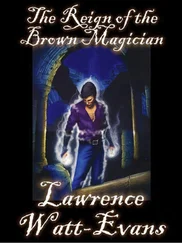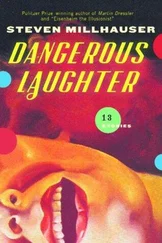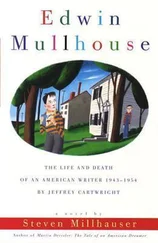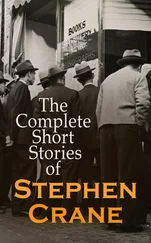Alice is growing thirsty, and as she falls slowly past a cupboard she opens the doors. She sees a bottle labeled GINGER BEER and grasps it as she falls, but the bottom of the bottle catches on the edge of the shelf and the bottle slips from her fingers. Alice covers her ears, widens her eyes, and opens her mouth to scream. But she sees the bottle of ginger beer falling lazily in front of her and not plunging down like a stone in a well. The bottle is tilted like the hand of a clock pointing to ten; at once Alice reaches out and seizes the bottle firmly. When she brings it close to her face she sees with disappointment that there is scarcely a swallow of ginger beer left. She wonders how long the bottle has been sitting on the shelf, for it simply won’t do to drink from an old bottle, or one that has been used by someone else. She will have to speak to the housekeeper, if she ever finds one. How neat and clean the shelves are! The housekeeper must have a fine feather duster. But it must be a very long feather duster, to reach so high. Alice feels that her thoughts are growing confused, and without another moment’s hesitation she raises the bottle to her lips and swallows the ginger beer. “Why,” Alice says to herself in surprise, “this isn’t ginger beer at all! It is nothing but soda water! I shall certainly have to speak to someone about this. Fancy if all labels meant something else, so that you never knew what you were going to eat. Please, Miss, would you care for more buttered toast? And out comes roast duck and dumplings. But that isn’t what I mean, exactly.” Alice is no longer certain what she means, exactly; when she looks up she can see the cupboard vanishing in the dark. As she falls past another cupboard, she manages to place the bottle inside. At the last moment she realizes that the label is still not right, since the bottle is now empty. But, Alice thinks to herself as the cupboard rises into the dark, it isn’t as wrong as it was before.
It occurs to Alice that the shaft is a prison: she cannot climb out, she cannot escape. It may be that she can stop falling, by reaching out and grasping the top of a cupboard, the edge of a niche, or a protruding piece of stone; but even if the cupboard does not tear out of the wall, even if the edge of the niche does not crumble, and the stone not break, what possible use will it be to hang there like a coat on a peg, while her fingers and arms grow tireder and tireder? There are no doors or windows in the walls of her prison, no stairs or ladders: it seems more sensible to keep falling, and to hope for an end of falling, than to stop and think about regaining the upper world. Perhaps if she had stopped very early in her fall, it might not have been too late. Alice tries to imagine herself sitting on top of a cupboard as she looks up and cries for help: her legs dangle against the cupboard doors, she grasps the rim of the cupboard top, she raises her face and shouts for her sister. It occurs to Alice that she has never once cried out, in all her falling; until this moment, when it is too late, the idea has never come to her.
Down, down, down. Something must be wrong, Alice thinks to herself, for the fall should surely be over by now. And a doubt steals over her, like a cloud shadow over a pool on a summer’s day. Did she do the right thing, when she jumped into the rabbit hole? Wasn’t she guilty of a certain rashness? Shouldn’t she have considered more carefully, before taking such a step? But the leap into the rabbit hole was the same as the leap to her feet beside her sister: it was the final motion of a single impulse, as if she had leaped from the bank directly into the rabbit hole. The mistake was to have jumped up in the first place. Alice tries to recall her feeling of restlessness on the bank, under the tree, beside her sister, but she recalls only the warm, drowsy shade, the sunny field of daisies, the blue, blue sky. Of course, it was the White Rabbit that made her jump up in excitement. But is a rabbit with a waistcoat and watch really so remarkable, when you stop to think about it? Was it really necessary for her to jump up without a moment’s hesitation and run off so rashly, without considering anyone’s feelings but her own? Her sister will be worried; when she looks up from her book, Alice will be gone; her day will be ruined. And is it possible, Alice thinks to herself, that the rabbit was only the usual sort of rabbit, after all? Is it possible that she had been daydreaming again, there on the bank beside her sister? Alice, doubting, feels a little burst of bitterness in her heart.
In the darkness, lit here and there by the dim glow of oil lamps, Alice feels a sudden revulsion: the tunnel walls oppress her, the cupboards bore her to death, she can’t stand it for another second — and still she continues falling, past the always rising maps, the pictures, the cupboards, the bookshelves. She can hardly breathe in the dank, close air. It is like a long railway journey, without conversation and without any hope of taking tea. Above, the darkness pushes down on her like a column of stone; below, the darkness sweeps slowly upward, sticking to the dark above, increasing its height and weight. There is absolutely nothing to do. Do cats eat bats? Do bats eat cats? Do rats eat mats? Do blats eat clats? This can’t go on much longer, Alice thinks to herself, and opens her mouth to scream, but does not scream.
There is no illustration of Alice falling, and so we must imagine the Tenniel drawing: Alice in black and white, falling against a dark background of minute cross-hatchings, upon which we can make out the bottom corner of a cupboard. Alice is wearing black shoes, white stockings with black shading, a white dress and white pinafore. Her long hair is lifted away from her face on both sides; her wide dress billows. Her elbows are held away from her sides and her forearms are held stiffly before her, at different heights; the fingers of the lower hand are spread tensely, the fingers of the upper hand are curved as if she is playing an invisible piano. Under her black eyebrows her black eyes are wide and brooding. The creases of her pinafore are indicated by several series of short parallel lines; the shadow of an arm across her pinafore shows as cross-hatching. In the lower right-hand corner is Tenniel’s monogram: a large T crossed with a small J . The illustration is without a frame, and is fitted into the text in such a way that the words continue down the right-hand side of the drawing for most of the page before stretching across the entire width of the page for the last six lines. Alice is therefore falling alongside the text that describes her fall, and at the same time is enclosed by the text; if she falls any farther, she will bump into words. Pictured in the act of falling, Alice remains motionless: she is fixed forever in her fall.
There are four dreams of falling. The first is dreamed by Alice, asleep on the bank with her head in her sister’s lap: she dreams of falling down a long vertical tunnel or well. The second is the dream that Alice tells her sister, when falling leaves wake her on the bank: her tale includes the story of the long fall through the dark well. The third is the dream of Alice’s sister, alone on the bank, in the setting sun: she dreams of Alice telling her dream, which includes the story of the fall through the dark tunnel. The fourth is Alice’s sister’s dream of Alice as a grown woman: she dreams of grown-up Alice telling the dream of Wonderland to little children gathered about her. Alice is therefore caught in a circle of dream-falls: no sooner does she wake than she begins to fall again down the dark tunnel, as she recounts her dream to her sister, and no sooner does she run off to tea than she begins to fall again, in her sister’s dream; and even as a grown woman she is still falling through the dark, as the bright-eyed children look up at her with eager faces. It appears, then, that Alice can never escape from her dream: once she plunges into the rabbit hole, once she leaves the safe, predictable world of her sister, she can never return; once she starts to fall, she can never stop falling.
Читать дальше












